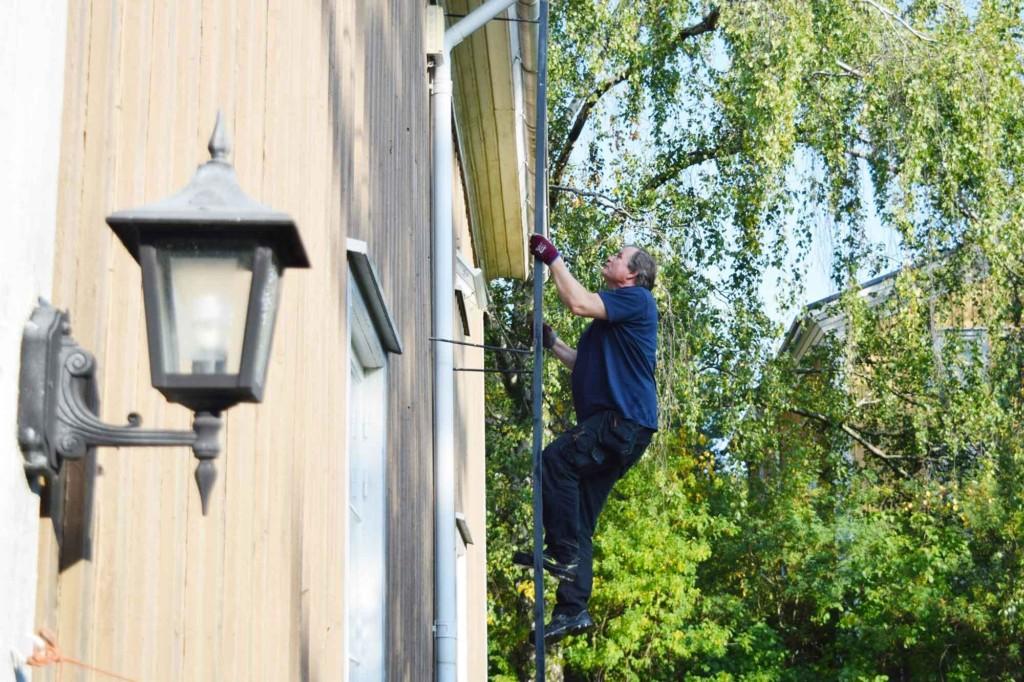Humidity Survey for Sanitary Premises
When a property reaches the age of 20 years, the sanitary premises should undergo a humidity survey. Floor drains are the largest humidity damage risk in sanitary premises, which is why a Humidity Survey for Sanitary Premises covers all the bathrooms in a housing company.
Properties sometimes go through some humidity surveys already before the end of the estimated technical service life of the sanitary premises. The sanitary premises in some of the apartments of an apartment building are inspected in connection with housing transactions, so that the new owner will not get an unpleasant surprise. A humidity survey is performed if humidity damage has occurred in an apartment to determine the scope of the damage.
A Humidity Survey for Sanitary Premises focuses on the areas that are most susceptible to humidity damage, such as floor drains and shower corners. A humidity detector is used to verify that there is no excess humidity in the sanitary premises. An expert also inspects the overall appearance of the premises.
“The information obtained during the Humidity Survey for Sanitary Premises will be included in a compilation report that will be handed over to the property manager or the housing company’s Board of Directors. The compilation report includes photos taken during the site visit and a summary of the research results,” explains Jari Marttinen, the head of the Raksystems Condition Survey unit.
A Humidity Survey for Sanitary Premises is usually done using non-destructive methods – the property owner will always be asked for permission for any required further surveys
The purpose of the Humidity Survey for Sanitary Premises is to determine whether there is any humidity in the sanitary premises. Only points that are susceptible to humidity during normal use of the premises will be studied with a humidity detector. Humidity will be measured at several points on the walls and floor. If no increased humidity is detected in these surfaces, the other surfaces will only be visually inspected.
In addition to humidity, the tiling will be inspected, looking for any loose tiles. If not quickly repaired, loose tiles can also allow humidity to enter the structures.
The humidity survey is usually performed using non-destructive methods, unless there is reason to suspect humidity damage. Surfaces are not opened if opening them can be avoided; at its smallest, an internal survey of a structural element can mean measuring the humidity level through a hole made with a drill.
“No internal surveys will be performed before receiving permission from the property owner. The need to repair structures cannot be determined simply by measuring the humidity level on the surface of the structure; instead, the structure must always be opened,” Marttinen points out.
Humidity survey determines when a renovation of the sanitary premises is necessary and how urgent it is
A Humidity Survey for Sanitary Premises is also often performed in order to determine in which order the bathrooms in the apartments should be renovated.
“When an expert surveys the humidity levels in a housing company, they will also prepare a list of the bathrooms that are in most urgent need of repairs. The list should be heeded to ensure that there will be no surprising humidity damage and also to ensure that bathroom renovations are not performed too early,” Marttinen points out.
A correctly timed renovation is part of responsible real estate management – not to mention the environmental impact
The general starting point for property repair actions are the current building regulations and guidelines, which must be applied based on the special characteristics and requirements of the site. Preventive maintenance actions and quickly repairing any damage will save costs and retain the property’s value and living comfort.
If damage is not repaired on time, it will usually become worse and harder to repair; repair costs will also increase over time. Non-repaired damage may also hinder living in the property.
The constructed environment produces up to 30% of all the emissions in Finland. Improving the energy efficiency of buildings is one of the most cost-effective ways of curbing climate change.
The Finnish Government has budgeted a total of €100 million for energy aid to one-family houses, housing companies and non-profit ARA corporations between 2020 and 2022. The aids aim to improve the energy efficiency of properties by up to 20% from the level of the current regulations.
The value of a properly maintained housing company will be retained, and the property will attract new residents and shareholders also in the future.



